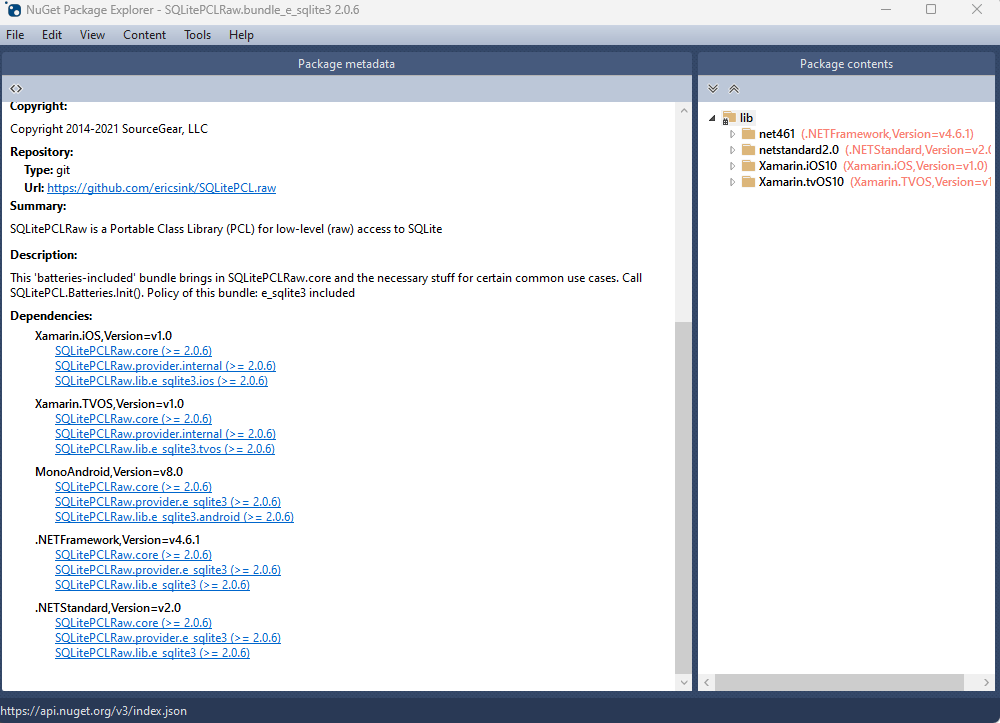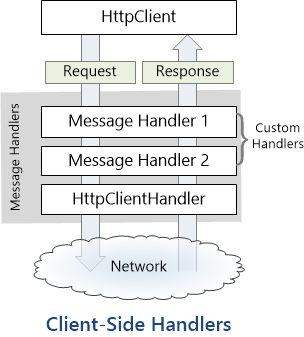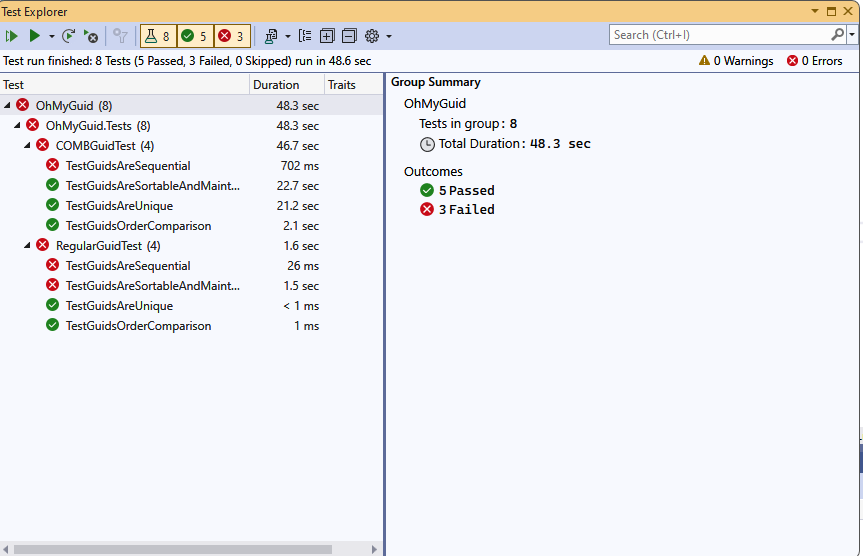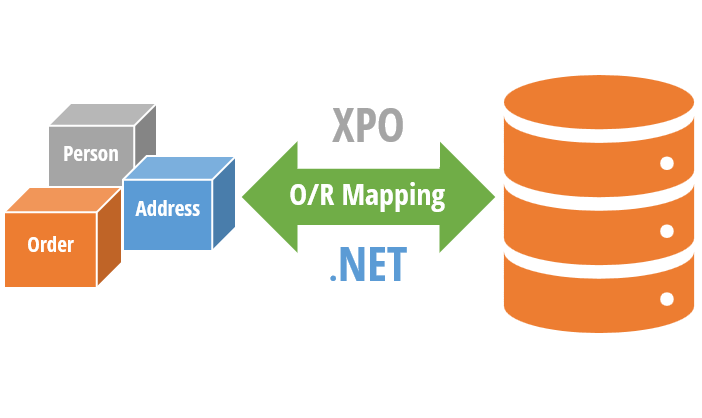
by Joche Ojeda | Oct 5, 2023 | Postgres, Search
Postgres Vector Search
Full-text search in PostgreSQL is implemented using a concept called “text search vectors” (or just “tsvector”). Let’s dive into how it works:
- Text Search Vectors (tsvector):
- A tsvector is a sorted list of distinct lexemes, which are words that have been normalized to merge different forms of the same word (e.g., “run” and “running”).
- PostgreSQL provides functions to convert plain text into tsvector format, which typically involves:
- Parsing the text into tokens.
- Converting tokens to lexemes.
- Removing stop words (common words like “and” or “the” that are typically ignored in searches).
- Example: The text “The quick brown fox” might be represented in tsvector as ‘brown’:3 ‘fox’:4 ‘quick’:2.
- Text Search Queries (tsquery):
- A tsquery represents a text search query, which includes lexemes and optional operators.
- Operators can be used to combine lexemes in different ways (e.g., AND, OR, NOT).
- Example: The query “quick & fox” would match any tsvector containing both “quick” and “fox”.
- Searching:
- PostgreSQL provides the @@ operator to search a tsvector column with a tsquery.
- Example: WHERE column @@ to_tsquery(‘english’, ‘quick & fox’).
- Ranking:
- Once you’ve found matches using the @@ operator, you often want to rank them by relevance.
- PostgreSQL provides the ts_rank function to rank results. It returns a number indicating how relevant a tsvector is to a tsquery.
- The ranking is based on various factors, including the frequency of lexemes and their proximity to each other in the text.
- Indexes:
- One of the significant advantages of tsvector is that you can create a GiST or GIN index on it.
- These indexes significantly speed up full-text search queries.
- GIN indexes, in particular, are optimized for tsvector and provide very fast lookups.
- Normalization and Configuration:
- PostgreSQL supports multiple configurations (e.g., “english”, “french”) that determine how text is tokenized and which stop words are used.
- This allows you to tailor your full-text search to specific languages or requirements.
- Highlighting and Snippets:
- In addition to just searching, PostgreSQL provides functions like ts_headline to return snippets of the original text with search terms highlighted.
In summary, PostgreSQL’s full-text search works by converting regular text into a normalized format (tsvector) that is optimized for searching. This combined with powerful query capabilities (tsquery) and indexing options makes it a robust solution for many full-text search needs.
Implementing vector search using E.F Core and Postgres SQL
here are the steps to implement vector search in your dot net project:
Step 1: Add the required nuget packages
<PackageReference Include="Npgsql.EntityFrameworkCore.PostgreSQL" Version="7.0.11" />
<PackageReference Include="Npgsql.EntityFrameworkCore.PostgreSQL.Design" Version="1.1.0" />
<PackageReference Include="Npgsql.EntityFrameworkCore.PostgreSQL.NetTopologySuite" Version="7.0.11" />
Step 2: Implement a vector in your entities by implementing properties of type NpgsqlTsVector as shown below
public class Blog
{
public int Id { get; set; }
public string Title { get; set; }
public NpgsqlTsVector SearchVector { get; set; }
}
Step 3: add a computed column in your DbContext
protected override void OnModelCreating(ModelBuilder modelBuilder)
{
modelBuilder.Entity<Blog>()
.Property(b => b.SearchVector)
.HasComputedColumnSql("to_tsvector('english', \"Blogs\".\"Title\")", stored: true);
}
in this case you are calculating the vector using the value of the title column of the blogs table, you can calculate the vector using a single column or a combination of columns
Now you are ready to use vector search in your queries, please check the example below
var searchTerm = "Jungle"; // Example search term
var searchVector = NpgsqlTsVector.Parse(searchTerm);
var blogs = context.Blogs
.Where(p => p.SearchVector.Matches(searchTerm))
.OrderByDescending(td => td.SearchVector.Rank(EF.Functions.ToTsQuery(searchTerm))).ToList();
In real world scenarios its better to create a vector by joining the values of several columns and weight them according to the relevance for your business case, you can check the test project I have created here : https://github.com/egarim/PostgresVectorSearch
and that’s it for this post, until next time, happy coding ))

by Joche Ojeda | Sep 23, 2023 | Search
Elasticsearch is a distributed, RESTful search and analytics engine capable of solving a growing number of use cases. It is a technology that is part of the Elastic Stack, along with Logstash, and Kibana, collectively known as the ELK Stack. Elasticsearch is built on top of the open-source Lucene library and provides a multi-tenant capable full-text search engine. It’s designed to be scalable, resilient, and very fast, which makes it a popular choice for many different types of applications including:
1. Search Engines: Full-text search, partial text search, faceted search, and more.
2. Log and Event Data Analysis: Often used with Logstash and Kibana for searching, analyzing, and visualizing log data in real-time.xx
3. Real-time Analytics: Can be used for analyzing large volumes of real-time data efficiently.
4. Data Visualization: Often used with Kibana to visualize the data stored in Elasticsearch.
5. Autocomplete Features: Quick search suggestions.
6. Geospatial Search: Searching based on geographic location.
Key Features:
- Distributed and Scalable: Built to scale horizontally with easy distribution across multiple nodes.
- Schema-free JSON Documents: Uses JSON documents in order to store data, which makes it flexible and easy to use.
- RESTful API: Exposes REST APIs for CRUD operations, allowing interaction via standard HTTP methods.
- Real-time Indexing: As soon as a document is stored, it is available for search.
- Multi-tenancy: Supports multiple indices, and the indices can be divided into shards for better performance.
Basic Concepts:
- Node: A single running instance of Elasticsearch.
- Cluster: A collection of one or more nodes.
- Index: A collection of documents having somewhat similar characteristics.
- Shard: A subset of an index. Each shard is a self-contained index.
- Replica: A copy of a shard for failover and increased performance.
Elasticsearch is widely used in a variety of applications that require complex search features, large-scale logging, or real-time analytics. It’s often compared to other NoSQL databases like MongoDB and Apache Solr.
Choosing to use Elasticsearch depends on your specific needs, but there are several compelling reasons why it might be a good fit for your project:
Speed
- Fast Search: Built on top of Apache Lucene, Elasticsearch is designed for fast, real-time search operations.
- Real-time Indexing: New data is searchable almost immediately after it’s added.
Scalability
- Horizontal Scaling: You can easily add more nodes to your Elasticsearch cluster as your data and query volume grow.
- Distributed Nature: Automatically distributes data and query load across all the available nodes in the cluster.
Flexibility
- Schema-less: You can index JSON documents without a predefined schema.
- RESTful API: Easily interact with the search engine through RESTful APIs, using JSON over HTTP.
- Multiple Data Types: Supports text, numbers, dates, geospatial data, and more.
Robustness
- High Availability: Multiple copies of data (replicas) can be maintained to provide failover.
- Built-in Cluster Health and Monitoring: Tools like Kibana can provide insights into the operations and health of your Elasticsearch cluster.
Rich Query DSL
- Powerful Query Language: Elasticsearch provides a rich, flexible, query language (DSL) that can perform complex queries, filters, and aggregations.
- Relevancy Scoring: Sophisticated algorithms score each document for its relevance to a given search query.
Integration and Extensibility
- Part of the Elastic Stack: Integrates seamlessly with other components like Logstash for data ingestion and Kibana for data visualization.
- Extensible: Supports plugins to add additional features and capabilities.
Multi-Tenancy
- Support for Multiple Indices: You can have multiple indices (databases) and query them all at once if needed.
Use Cases
- Full-text Search: For applications like e-commerce product search, media catalog search, etc.
- Logging and Log Analysis: When combined with Logstash and Kibana, it’s a powerful tool for logging debug information, monitoring, and real-time analytics.
- Real-time Analytics: For business intelligence, performance metrics, and other real-time analytics needs.
- Data Visualization: Can be used with Kibana or other visualization tools to graphically represent your data.
Community and Ecosystem
- Strong Community: A large, active community contributes to its robust set of features.
- Comprehensive Documentation: Extensive online resources are available to help you get the most out of Elasticsearch.
However, it’s important to note that Elasticsearch may not be suitable for all types of projects. It can be resource-intensive, and the learning curve can be steep if you’re new to search and analytics engines. It might also be overkill for simple search needs or small datasets. Always consider your specific requirements and constraints when deciding whether to use Elasticsearch.

by Joche Ojeda | Sep 15, 2023 | IPFS
IPFS stands for the InterPlanetary File System. It is a protocol and network designed to create a peer-to-peer method of storing and sharing hypermedia in a distributed file system. IPFS was initially designed by Juan Benet and is now an open-source project with a large community of contributors.
How IPFS Works
In a traditional client-server model like HTTP, your computer (the client) requests information from a specific server. This creates a centralized point of failure; if the server goes down or is slow, you can’t access your information.
IPFS aims to decentralize the web by creating a peer-to-peer network where each computer can host files, or parts of files, making the network more robust and potentially faster. Here’s a simplified explanation of how IPFS works:
1. Content Addressing: Unlike traditional file systems that locate data based on where it is stored (file location), IPFS locates files based on what they are (file content). Each file and all of the blocks within it are given a unique fingerprint called a cryptographic hash.
2. Distributed Storage: Files are split into blocks, and each block is stored across a decentralized network of nodes. When you look up a file, you’re asking the network to find nodes that are storing the blocks that make up the file.
3. Data Retrieval: When you want to access a file, your computer asks the network for the blocks that make up the file. It can then reassemble the file for use. This can happen much faster as multiple nodes might be closer to you or have parts of the file, allowing for parallel downloads.
4. Immutable and Versioned: Files are immutable, meaning they can’t be changed without altering the hash of the file. This also means that every version of every file is permanently stored. This is advantageous for archiving and versioning but can be a challenge for mutable data.
5. Node Involvement: Anyone can operate a node, and by doing so, contribute to storing and distributing content. Nodes can also cache popular content to improve data retrieval speed and reduce the burden on individual nodes.
Advantages of IPFS
- Decentralization: Removes single points of failure in the network.
- Performance: Potentially faster than traditional systems because data can be distributed more efficiently.
- Censorship Resistance: Harder to censor or control content.
- Permanent Web: Content-addressing allows for a more robust and permanent web.
Disadvantages of IPFS
- Complexity: The architecture is more complex than traditional client-server models.
- Data Redundancy: Every version of every file being stored can consume a lot of storage.
- Legal and Ethical Issues: As with any file-sharing system, there’s the potential for misuse, such as sharing copyrighted or illegal material.
IPFS has gained attention and usage in various sectors including web development, scientific data, and blockchain. It’s often mentioned in the same breath as other decentralized technologies like blockchain.

by Joche Ojeda | Jul 26, 2023 | Blazor, C#, Sqlite, WebAssembly
In the evolving panorama of contemporary web application development, a technology that has particularly caught attention is Microsoft’s Blazor WebAssembly. This powerful tool allows for a transformative approach to managing and interacting with client-side data, offering innovative capabilities that are shaping the future of web applications.
Understanding Blazor WebAssembly
Blazor WebAssembly is a client-side web framework from Microsoft. It allows developers to build interactive web applications using C# instead of JavaScript. As the name suggests, it uses WebAssembly, a binary instruction format for a stack-based virtual machine, providing developers with the ability to run client-side web applications directly in the browser using .NET.
The Power of SQLite
SQLite, on the other hand, is a software library that provides a relational database management system (RDBMS). It operates directly on disk files without the need for a separate server process, making it ideal for applications that need local storage. It’s compact, requires zero-configuration, and supports most of the SQL standard, making it an excellent choice for client-side data storage and manipulation.
Combining Blazor WebAssembly with SQLite
By combining these two technologies, you can unlock the full potential of client-side data handling. Here’s how:
Self-Contained and Cross-Platform Development
Both Blazor WebAssembly and SQLite are self-contained systems, requiring no external dependencies. They also both provide excellent cross-platform support. This makes your applications highly portable and reduces the complexity of the development environment.
Offline Availability
SQLite enables the storage of data directly in the client’s browser, allowing your Blazor applications to work offline. Changes made offline can be synced with the server database once the application goes back online, providing a seamless user experience.
Superior Performance
Blazor WebAssembly runs directly in the browser, offering near-native performance. SQLite, being a lightweight yet powerful database, reads and writes directly to ordinary disk files, providing high-speed data access. This combination ensures your application runs quickly and smoothly.
Full .NET Support and Shared Codebase
With Blazor, you can use .NET for both client and server-side code, enabling code sharing and eliminating the need to switch between languages. Coupled with SQLite, developers can use Entity Framework Core to interact with the database, maintaining a consistent, .NET-centric development experience.
Where does the magic happens?
The functionality of SQLite with WebAssembly may vary based on your target framework. If you’re utilizing .NET 6 and Microsoft.Data.SQLite 6, your code will reference SQLitePCLRaw.bundle_e_sqlite3 version 2.0.6. This bundle doesn’t include the native SQLite reference, as demonstrated in the following image

This implies that you’ll need to rely on .NET 6’s native dependencies to include your custom version of lib.e_sqlite3, compiled specifically for WebAssembly. For more detailed information about native dependencies, please refer to the provided links.
https://github.com/egarim/XpoNet6WasmSqlite
https://learn.microsoft.com/en-us/aspnet/core/blazor/webassembly-native-dependencies?view=aspnetcore-6.0
If you’re using .NET 7 or later, your reference from Microsoft.Data.SQLite will depend on SQLitePCLRaw.bundle_e_sqlite3 version 2.1.5. This bundle provides several targets for the native SQLite library (e_sqlite3), as can see in the accompanying image.

This indicates that we can utilize SQLite on any platform supported by .NET, provided that we supply the native reference for SQLite.
Conclusion
Blazor WebAssembly and SQLite together offer a compelling option for developers looking to leverage the power of client-side data. Their combination enables the development of web applications with high performance, offline availability, and a unified language platform.
This potent mix empowers developers to rethink what’s possible with web application development, pushing the boundaries of what we can achieve with client-side data storage and manipulation. In a world where user experience is paramount, the coupling of these technologies truly helps in unleashing the full potential of client-side data.

by Joche Ojeda | Jul 17, 2023 | Blazor, C#, Data Synchronization, EfCore, WebAssembly
Last week, I decided to create a playground for the SyncFramework to demonstrate how synchronization works. The sync framework itself is not designed in a client-server architecture, but as a set of APIs that you can use to synchronize data.
Synchronization scenarios usually involve a client-server architecture, but when I created the SyncFramework, I decided that network communication was something outside the scope and not directly related to data synchronization. So, instead of embedding the client-server concept in the SyncFramework, I decided to create a set of extensions to handle these scenarios. If you want to take a look at the network extensions, you can see them here.
Now, let’s return to the playground. The main requirement for me, besides showing how the synchronization process works, was not having to maintain an infrastructure for it. You know, a Sync Server and a few databases that I would have to constantly delete. So, I decided to use Blazor WebAssembly and SQLite databases running in the browser. If you want to know more about how SQLite databases can run in the browser, take a look at this article.
Now, there’s still a problem. How do I run a server on the browser? I know it’s somehow possible, but I did not have the time to do the research. So, I decided to create my own HttpClientHandler.
How the HttpClientHandler works
HttpClientHandler offers a number of attributes and methods for controlling HTTP requests and responses. It serves as the fundamental mechanism for HttpClient’s ability to send and receive HTTP requests and responses.
The HttpClientHandler manages aspects like the maximum number of redirects, redirection policies, handling cookies, and automated decompression of HTTP traffic. It can be set up and supplied to HttpClient to regulate the HTTP requests made by HttpClient.
HttpClientHandler might be helpful in testing situations when it’s necessary to imitate or mock HTTP requests and responses. The SendAsync method of HttpMessageHandler, from which HttpClientHandler also descended, can be overridden in a new class to deliver any response you require for your test.
here is a basic example
public class TestHandler : HttpMessageHandler
{
protected override async Task<HttpResponseMessage> SendAsync(HttpRequestMessage request, CancellationToken cancellationToken)
{
// You can check the request details and return different responses based on that.
// For simplicity, we're always returning the same response here.
var responseMessage = new HttpResponseMessage(HttpStatusCode.OK)
{
Content = new StringContent("Test response.")
};
return await Task.FromResult(responseMessage);
}
}
And here’s how you’d use this handler in a test:
[Test]
public async Task TestHttpClient()
{
var handler = new TestHandler();
var client = new HttpClient(handler);
var response = await client.GetAsync("http://example.com");
var responseContent = await response.Content.ReadAsStringAsync();
Assert.AreEqual("Test response.", responseContent);
}
The TestHandler in this illustration consistently sends back an HTTP 200 response with the body “Test response.” In a real test, you might use SendAsync with more sophisticated logic to return several responses depending on the specifics of the request. By doing so, you may properly test your code’s handling of different answers without actually sending HTTP queries.
Going back to our main story
Now that we know we can catch the HTTP request and handle it locally, we can write an HttpClientHandler that takes the request from the client nodes and processes them locally. Now, we have all the pieces to make the playground work without a real server. You can take a look at the implementation of the custom handler for the playground here
Until next time, happy coding )))))

by Joche Ojeda | Jul 10, 2023 | Blazor, Sqlite, WebAssembly
Blazor is a framework for building interactive client-side web UI with .NET, developed by Microsoft. It allows developers to build full-stack web applications using C# instead of JavaScript.
Blazor comes in two different hosting models:
1. Blazor Server: In this model, the application runs on the server from within an ASP.NET Core app. UI updates, event handling, and JavaScript calls are handled over a SignalR connection.
2. Blazor Web Assembly: In this model, the application runs directly in the browser on a Web Assembly-based .NET runtime. Blazor Web Assembly includes a proper .NET runtime implemented in Web Assembly, a standard that defines a binary format for executable programs in web pages.
In both models, you can write your code in C#, compile it, and have it run in the browser. However, the way the code is executed differs significantly.
Blazor Web Assembly has a few key features:
– Runs in the browser: The app’s .NET assemblies and its runtime are downloaded into the browser and run locally. There’s no need for ongoing active server connection like in Blazor Server.
– Runs on Web Assembly: Web Assembly (wasm) is a binary instruction format for a stack-based virtual machine. It’s designed as a portable target for the compilation of high-level languages like C, C++, and Rust, allowing deployment on the web for client and server applications.
– Can be offline capable: Blazor Web Assembly apps can download the necessary resources to the client machine and run offline.
– Full .NET debugging support: Developers can debug their application using the tools they are accustomed to, like Visual Studio and Visual Studio Code.
– Sharing code between server and client: Since Blazor uses .NET for both server-side and client-side, code can easily be shared or moved, which is especially useful for data validation and model classes.
SQLite
As an alternative, Indexed DB, a low-level API for client-side storage of significant amounts of structured data, can be used as a backing store. However, using SQLite in a web browser through Web Assembly and Indexed DB is a rather advanced topic that may require additional libraries to manage the details.
Another way to use SQLite with Web Assembly is on the server side, particularly when using technologies like WASI (Web Assembly System Interface), which aims to extend the capabilities of Web Assembly beyond the browser. With WASI, Web Assembly modules could directly access system resources like the file system, and thus could interact with an SQLite database in a more traditional way.
Web Assembly and Native References
Applications built with Blazor Web Assembly (since net6) can incorporate native dependencies that are designed to function on Web Assembly. The .NET Web Assembly construction tools, which are also utilized for ahead-of-time (AOT) compilation of a Blazor application to Web Assembly and for relinking the runtime to eliminate unnecessary features, allow you to integrate these native dependencies into the .NET Web Assembly runtime statically.
This mean that if you are targeting net 6 in your Blazor Web Assembly application you can include the SQLite native Web Assembly reference and use all the power of a full SQL engine in your SPA application. If you want to learn more about native references here is the link for the official documentation
https://learn.microsoft.com/en-us/aspnet/core/blazor/webassembly-native-dependencies?view=aspnetcore-6.0
Including SQLite native reference in you Blazor Web Assembly project
The first thing that we need to do to use SQLite native reference in a web assembly application is to compile it from the source, you can do that in Linux or WSL
sudo apt-get install cmake default-jre git-core unzip
git clone https://github.com/emscripten-core/emsdk.git
cd emsdk
./emsdk install latest
./emsdk activate latest
source ./emsdk_env.sh
Command to compile SQLite as a web assembly reference
emcc sqlite3.h -shared -o e_sqlite3.o
Now that we have the native reference we need to refence it in the web assembly project
First we need to suppress the warnings we will get by adding native refences, so we need to include this lines in the project
<PropertyGroup>
<!-- The following two are to suppress spurious build warnings from consuming Sqlite. -->
<!--These will become unnecessary when the Sqlite packages contain a dedicated WASM binary. -->
<AllowUnsafeBlocks>true</AllowUnsafeBlocks>
<EmccExtraLDFlags>-s WARN_ON_UNDEFINED_SYMBOLS=0</EmccExtraLDFlags>
</PropertyGroup>
Now we are ready to include the reference
<ItemGroup>
<PackageReference Include="Microsoft.Data.Sqlite" Version="6.0.3" />
<NativeFileReference Include="e_sqlite3.o" />
</ItemGroup>
And voila, now we can use a SQLite database in web assembly
If you want to learn more about native references here are a few links that you might find interesting
Remember in this example we just talked about SQLite native reference but there is a world of native reference to explore, until next time, happy coding ))

by Joche Ojeda | Jul 4, 2023 | Uncategorized
Last week, I had two presentations, during both of which I was to present an example of data synchronization using the open-source framework we developed in our office, Xari/BitFrameworks. you can read more about the framework here https://github.com/egarim/SyncFramework
I practiced the demo several times and felt confident about it. After all, I was the one who made the last commit to the source. When the conference began, it was my time to shine. I eagerly spoke about the merits of the framework, then it was time for the technical demo.
Everything started well, but after a while, the framework stopped synchronizing data. I was baffled; I had practiced my demo multiple times. What could have gone wrong?
At the end of the demo, I did what everyone does when their presentation fails—I blamed the demo gods.
After resting for a few hours, I reset my computer and cleaned the Visual Studio solution. I practiced several more times and was ready for round two.
I repeated my presentation and reached the technical demo. There was nothing to fear, right? The previous failure was just a fluke… or so I thought. The demo failed even earlier this time. I cursed the demo gods and finished my presentation.
It was a hard week. I didn’t get the dopamine rush I usually got from presentations. It was a rainy Saturday morning, perfect weather to contemplate my failure. I decided not to give up and wrote some integration tests to determine what went wrong.
So why did my demo fail? The demo was about database synchronization using delta encoding theory. For a successful synchronization, I needed to process the deltas in the exact order they were sent to the server. I had a GUID type of index to sort the deltas, which seemed correct because every time I ran the integration test, it worked fine.
Still puzzled by why the demo failed, I decided to go deeper and wrote an integration test for the GUID generation process. I even wrote an article about it, which you can read here.
On my GUID, common problems using GUID identifiers
Now I was even more puzzled. The tests passed sometimes and failed other times. After a while, I realized there was a random element in how GUIDs are generated that introduced a little-known factor: probabilistic errors.
Probabilistic errors in software refer to a category of errors that occur due to the inherent randomness and uncertainty in some algorithms or systems. These errors are not deterministic, i.e., they may not happen every time the same operation is performed. Instead, they occur with a certain probability.
Here are a few examples of situations that could lead to probabilistic errors:
1. **Concurrency and Race Conditions**: In concurrent systems, the order in which operations are executed can be unpredictable and can lead to different outcomes. If the software is not designed to handle all possible execution orders, it can lead to probabilistic errors, such as race conditions, where the result depends on the timing of certain operations.
2. **Network Failures and Distributed Systems**: In distributed systems or systems that rely on network communications, network failures can lead to probabilistic errors. These can include lost messages, delays, and partial failures. As these events are inherently unpredictable, they can lead to errors that occur with a certain probability.
3. **Randomized Algorithms**: Some algorithms, such as those used in machine learning or optimization, involve an element of randomness. These algorithms can sometimes produce incorrect results due to this randomness, leading to probabilistic errors.
4. **Use of Unreliable Hardware**: Hardware failures can lead to probabilistic errors. For example, memory corruption, disk failures, or unreliable network hardware can cause unpredictable and probabilistic errors in the software that uses them.
5. **Birthday Paradox**: In probability theory, the birthday problem or birthday paradox concerns the probability that, in a set of n randomly chosen people, some pair of them will have the same birthday. Similarly, when generating random identifiers (like GUIDs), there is a non-zero chance that two of them might collide, even if the chance is extremely small.
Probabilistic errors can be difficult to diagnose and fix, as they often cannot be reproduced consistently. They require careful design and robust error handling to mitigate. Techniques for dealing with probabilistic errors can include redundancy, error detection and correction codes, robust software design principles, and extensive testing.
So tell me, have it ever happened to you? how did you detected the error? and how did you fix it?
Until next time, happy coding!!!!

by Joche Ojeda | Jul 3, 2023 | Programming Situations
A GUID (Globally Unique Identifier) is a unique reference number used as an identifier in computer systems. GUIDs are usually 128-bit numbers and are created using specific algorithms that are designed to make each GUID unique.
Characteristics of GUIDs:
- Uniqueness: The primary characteristic of a GUID is its uniqueness. The intent of a GUID is to be able to uniquely identify a resource, entity, or a record in any context, across multiple systems and databases, without overlap.
- Size: A GUID is typically a 128-bit number, which means there are a huge number of possible GUIDs (2 to the power of 128, or about 3.4 × 10^38).
- Format: GUIDs are usually expressed as 32 hexadecimal digits, grouped in a specific way and separated by hyphens, e.g.,
3F2504E0-4F89-11D3-9A0C-0305E82C3301.
- No Semantic Meaning: A GUID itself does not carry any information about the data it represents. It is simply a unique identifier.
Why are GUIDs useful?
- Distributed Systems: GUIDs are especially useful in distributed systems for ensuring unique identifiers across different parts of the system without needing to communicate with a central authority.
- No Central Authority Needed: With GUIDs, there’s no need for a central authority to manage the issuance of unique identifiers. Any part of your system can generate a GUID and be fairly certain of its uniqueness.
- Database Operations: GUIDs are also used as unique identifiers in databases. They are useful for primary keys, and they help avoid collisions that might occur during database operations like replication.
- Safer Data Exposure: Because a GUID does not disclose information about the data it represents, it is safer to expose in public-facing operations, such as in URLs for individual data records, compared to an identifier that might be incrementing or otherwise guessable.
However, using GUIDs also has its trade-offs. Their large size compared to a simple integer ID means they take up more storage space and index memory, and are slower to compare. Also, because they are typically generated randomly, they can lead to fragmentation in the database, which can negatively impact performance.
Disadvantages
While GUIDs (Globally Unique Identifiers) have several advantages, such as providing a unique identifier across different systems and domains without the need for a central authority, they do come with their own set of problems and limitations. Here are some common issues associated with using GUIDs:
- Size: A GUID is 128 bits, much larger than an integer or long. This increased size can lead to more memory and storage usage, especially in large systems. They also take longer to compare than integers.
- Non-sequential: GUIDs are typically generated randomly, so they are not sequential. This can lead to fragmentation in databases, where data that is frequently accessed together is stored in scattered locations. This can slow down database performance.
- Readability: GUIDs are not human-friendly, which makes them difficult to debug or troubleshoot. For example, if you’re using GUIDs in URLs, it’s hard for users to manually enter them or understand them.
- Collision Risk: While the risk of generating a duplicate GUID is incredibly small, it is not zero. Especially in systems that generate a very large number of GUIDs, the probability of collision (though still extremely small) is greater than zero. This is known as the “birthday problem” in probability theory.
- No Information Content: GUIDs don’t provide any information about the data they represent. Unlike structured identifiers, you can’t encode any information in a GUID.
- Network Sorting: GUIDs can have different sort orders, depending on whether they’re sorted as strings or as raw byte arrays, and this can lead to confusion and mistakes.
To mitigate some of these problems, some systems use GUIDs in a modified or non-standard way. For example, COMB (combined GUID/timestamp) GUIDs or sequential GUIDs add a sequential element to reduce database fragmentation, but these come with their own trade-offs and complexities.
COMB GUIDS
A COMB (Combined Guid/Timestamp) GUID is a strategy that combines the uniqueness of GUIDs with the sequential nature of timestamps to mitigate some of the issues associated with GUIDs, particularly the database fragmentation issue.
A typical GUID is 128 bits and is usually displayed as 32 hexadecimal characters. When generating a COMB GUID, part of the GUID is replaced with the current timestamp. The portion of the GUID that is replaced and the format of the timestamp can vary depending on the specific implementation, but a common strategy is to replace the least significant bits of the GUID with the current timestamp.
Here’s a broad overview of how it works:
- Generate a regular GUID.
- Get the current timestamp (in a specific format, such as the number of milliseconds since a particular epoch).
- Replace a part of the GUID with the timestamp.
Because the timestamp is always increasing, the resulting COMB GUIDs will also increase over time, meaning that when new rows are inserted into a database, they are likely to be added to the end of the table or index, thus minimizing fragmentation.
However, there are some trade-offs to consider:
- Uniqueness: Because part of the GUID is being replaced with a timestamp, there is a slightly higher chance of collision compared to a regular GUID. However, as long as the non-timestamp portion of the GUID is sufficiently large and random, the chance of collision is still extremely small.
- Size: A COMB GUID is the same size as a regular GUID, so it doesn’t mitigate the issue of GUIDs being larger than simpler identifiers like integers.
- Readability and information content: Like regular GUIDs, COMB GUIDs are not human-friendly and don’t provide information about the data they represent.
- Sorting dependance: In most cases, COMB GUIDs are generated by a custom algorithm that adds a timestamp. This means that you also need an algorithm to extract the timestamp and execute the sorting based on these timestamp values. Additionally, you might need to implement your algorithm twice: once for the client side and once for the database engine
It’s worth noting that different systems and languages may have their own libraries or functions for generating COMB GUIDs. For example, in .NET, the NHibernate ORM has a comb identifier generator that generates COMB GUIDs.
And before I say good bye to this article, here is a test project to probe my point
https://github.com/egarim/OhMyGuid
And here are the test results

Until the next time, happy coding ))

by Joche Ojeda | May 30, 2023 | Uncategorized
Let’s do a quick overview of the main features of XPO before we dive into details.
XPO (eXpress Persistent Objects) is a full-featured Object-Relational Mapping (ORM) framework developed by DevExpress. It is used to provide a mapping between the relational database tables and the objects used in a .NET application.
XPO allows developers to interact with a database in a more natural, object-oriented manner and eliminates the need to write complex SQL statements. It provides a high-level API for working with databases, automating common tasks such as connecting to a database, querying data, and committing changes.
With XPO, developers can focus on the business logic of the application rather than worrying about the low-level details of working with databases.
Throughout the book, we will explore each feature of XPO in depth, providing a comprehensive understanding of its capabilities. However, here are some of the most notable features of XPO that we will highlight:
- Object-Relational Mapping (ORM): XPO provides a mapping between the relational database tables and the objects used in a .NET application. This makes it easier for developers to interact with databases in a more natural, object-oriented manner.
- High-Level API: XPO provides a high-level API for working with databases, automating common tasks such as connecting to a database, querying data, and committing changes.
- Data Types Mapping: XPO automatically maps .NET data types to their corresponding SQL data types and vice versa, eliminating the need for manual data type conversion.
- LINQ Support: XPO includes built-in LINQ (Language Integrated Query) support, making it easier to write complex, fine-tuned queries.
- Customizable SQL Generation: XPO allows developers to customize the SQL generated by the framework, providing greater control over the database operations.
- Lazy Loading: XPO supports lazy loading, meaning that related objects can be loaded on demand, reducing the amount of data that needs to be loaded at once and improving performance.
- Change Tracking: XPO tracks changes made to objects and automatically updates the database as needed, eliminating the need to write manual update statements.
- Validation: XPO provides built-in support for validating objects, making it easier to enforce business rules and ensure data integrity.
- Caching: XPO provides caching capabilities, allowing frequently used data to be cached and reducing the number of database queries required.
- Support for Multiple Databases: XPO supports a wide range of relational databases, including SQL Server, Oracle, MySQL, PostgreSQL, and more.
Enhancing XPO with Metadata : Annotations
In C#, annotations are attributes that can be applied to classes, properties, methods, and other program elements to add metadata or configuration information.
In XPO, annotations are used extensively to configure the behavior of persistent classes.
XPO provides a number of built-in annotations that can be used to customize the behavior of persistent classes, making it easier to work with relational data using object-oriented programming techniques.
Some of the most commonly used annotations include:
- Persistent: Specifies the name of the database table that the persistent class is mapped to.
- PersistentAlias: Specifies the name of the database column that a property is mapped to.
- Size: Specifies the maximum size of a database column that a property is mapped to.
- Key: Marks a property as a key property for the persistent class.
- NonPersistent: Marks a property as not persistent, meaning it is not mapped to a database column.
- Association: Specifies the name of a database column that contains a foreign key for a one-to-many or many-to-many relationship.
In addition to the built-in annotations, XPO also provides a mechanism for defining custom annotations. You can define a custom annotation by defining a class that is inherited from the Attribute class.
Annotations can be applied using a variety of mechanisms, including directly in code, via configuration files, or through attributes on other annotations.
We will witness the practical implementation of annotations throughout the book, including our own custom annotations. However, we wanted to introduce them early on as they play a crucial role in the efficient mapping and management of data within XPO.
Now that we have refreshed our understanding of XPO’s main goal and features, let’s delve into the “O”, the “R”, and the “M” of an ORM.
And that’s all for this post, until next time ))
We are excited to announce that we are currently in the process of writing a comprehensive book about DevExpress XPO. As we work on this project, we believe it is essential to involve our readers and gather their valuable feedback. Therefore, we have decided to share articles from the book as we complete them, giving you an opportunity to provide input and suggestions that we can consider for inclusion in the final release. Keep in mind that the content presented is subject to change. We greatly appreciate your participation in this collaborative effort.
Related Articles
SOLID design pattern and XPO
What is an O.R.M (Object-Relational Mapping)
ADO The origin of data access in .NET
Relational database systems: the holy grail of data

by Joche Ojeda | May 29, 2023 | Uncategorized
SOLID is an acronym that stands for five fundamental principles of object-oriented programming and design. These principles were first introduced by Robert C. Martin (also known as Uncle Bob) and have since become a cornerstone of software development best practices. Each letter in SOLID represents a principle that, when applied correctly, leads to more maintainable and modular code.
Let’s dive into each of the SOLID principles and understand how they contribute to building high-quality software systems:
Single Responsibility Principle (SRP):
The SRP states that a class should have only one reason to change. In other words, a class should have a single responsibility or a single job. This principle encourages developers to break down complex systems into smaller, cohesive modules. By ensuring that each class has a focused responsibility, it becomes easier to understand, test, and modify the code without affecting other parts of the system.
Open-Closed Principle (OCP):
The OCP promotes the idea that software entities (classes, modules, functions, etc.) should be open for extension but closed for modification. This principle emphasizes the importance of designing systems that can be easily extended with new functionality without modifying existing code. By relying on abstractions, interfaces, and inheritance, developers can add new features by writing new code rather than changing the existing one. This approach reduces the risk of introducing bugs or unintended side effects.
Liskov Substitution Principle (LSP):
The LSP states that objects of a superclass should be replaceable with objects of its subclasses without affecting the correctness of the program. In simpler terms, if a class is a subtype of another class, it should be able to be used interchangeably with its parent class without causing any issues. This principle ensures that inheritance hierarchies are well-designed, avoiding situations where subclass behavior contradicts or breaks the functionality defined by the superclass. Adhering to the LSP leads to more flexible and reusable code.
Interface Segregation Principle (ISP):
The ISP advises developers to design interfaces that are specific to the needs of the clients that use them. It suggests that clients should not be forced to depend on interfaces they don’t use. By creating small and focused interfaces, rather than large and monolithic ones, the ISP enables clients to be decoupled from unnecessary dependencies. This principle enhances modularity, testability, and maintainability, as changes to one part of the system are less likely to impact other parts.
Dependency Inversion Principle (DIP):
The DIP encourages high-level modules to depend on abstractions rather than concrete implementations. It states that high-level modules should not depend on low-level modules; both should depend on abstractions. This principle promotes loose coupling between components, making it easier to substitute or modify dependencies without affecting the overall system. By relying on interfaces or abstract classes, the DIP facilitates extensibility, testability, and the ability to adapt to changing requirements.
By applying the SOLID principles, software engineers can create codebases that are modular, flexible, and easy to maintain. These principles provide a roadmap for designing systems that are resilient to change, promote code reusability, and improve collaboration among development teams. SOLID principles are not strict rules but rather guidelines that help developers make informed design decisions and create high-quality software systems.
It’s worth mentioning that the SOLID principles should not be applied blindly in all situations. Context matters, and there may be scenarios where strict adherence to one principle might not be the best approach. However, understanding and incorporating these principles into the software design process can significantly improve the overall quality of the codebase.
SOLID and XPO
XPO is designed with SOLID design principles in mind. Here’s how XPO applies each of the SOLID principles:
Single Responsibility Principle (SRP)
XPO uses separate classes for each major concern such as mapping, persistence, connection providers, and data access. Each class has a clearly defined purpose and responsibility.
Open-Closed Principle (OCP)
XPO is extensible and customizable, allowing you to create your own classes and derive them from the XPO base classes. XPO also provides a range of extension points and hooks to allow for customization and extension without modifying the core XPO code.
Liskov Substitution Principle (LSP)
XPO follows this principle by providing a uniform API that works with all persistent objects, regardless of their concrete implementation. This allows you to write code that works with any persistent object, without having to worry about the specific implementation details.
Interface Segregation Principle (ISP)
XPO provides a number of interfaces that define specific aspects of its behavior, allowing clients to use only the interfaces they need. This reduces the coupling between the clients and the XPO library.
Dependency Inversion Principle (DIP)
XPO was developed prior to the widespread popularity of Dependency Injection (DI) patterns and frameworks.
As a result, XPO does not incorporate DI as a built-in feature. However, this does not mean that XPO cannot be used in conjunction with DI. While XPO itself does not provide direct support for DI, you can still integrate it with popular DI containers or frameworks, such as the .NET Core DI container or any other one.
By integrating XPO with a DI container, you can leverage the benefits of DI principles in your application while utilizing XPO’s capabilities for database access and mapping. The DI container can handle the creation and management of XPO-related objects, facilitating loose coupling, improved modularity, and simplified testing.
A clear example is the XPO Extensions for ASP.NET Core DI:
using DevExpress.Xpo.DB;
Using Microsoft.Extensions.DependencyInjection; // ...
var builder = WebApplication.CreateBuilder(args); builder.Services.AddXpoDefaultUnitOfWork(true, options => options.UseConnectionString(builder.Configuration.GetConnectionString("MSSqlServer")) .UseAutoCreationOption(AutoCreateOption.DatabaseAndSchema) .UseEntityTypes(new Type[] { typeof(User) }));
More information about XPO and DI here: https://docs.devexpress.com/XPO/403009/connect-to-a-data-store/xpo-extensions-for-aspnet-core-di
And that’s all for this post, until next time ))
We are excited to announce that we are currently in the process of writing a comprehensive book about DevExpress XPO. As we work on this project, we believe it is essential to involve our readers and gather their valuable feedback. Therefore, we have decided to share articles from the book as we complete them, giving you an opportunity to provide input and suggestions that we can consider for inclusion in the final release. Keep in mind that the content presented is subject to change. We greatly appreciate your participation in this collaborative effort.
Related Articles
What is an O.R.M (Object-Relational Mapping)
ADO The origin of data access in .NET
Relational database systems: the holy grail of data












